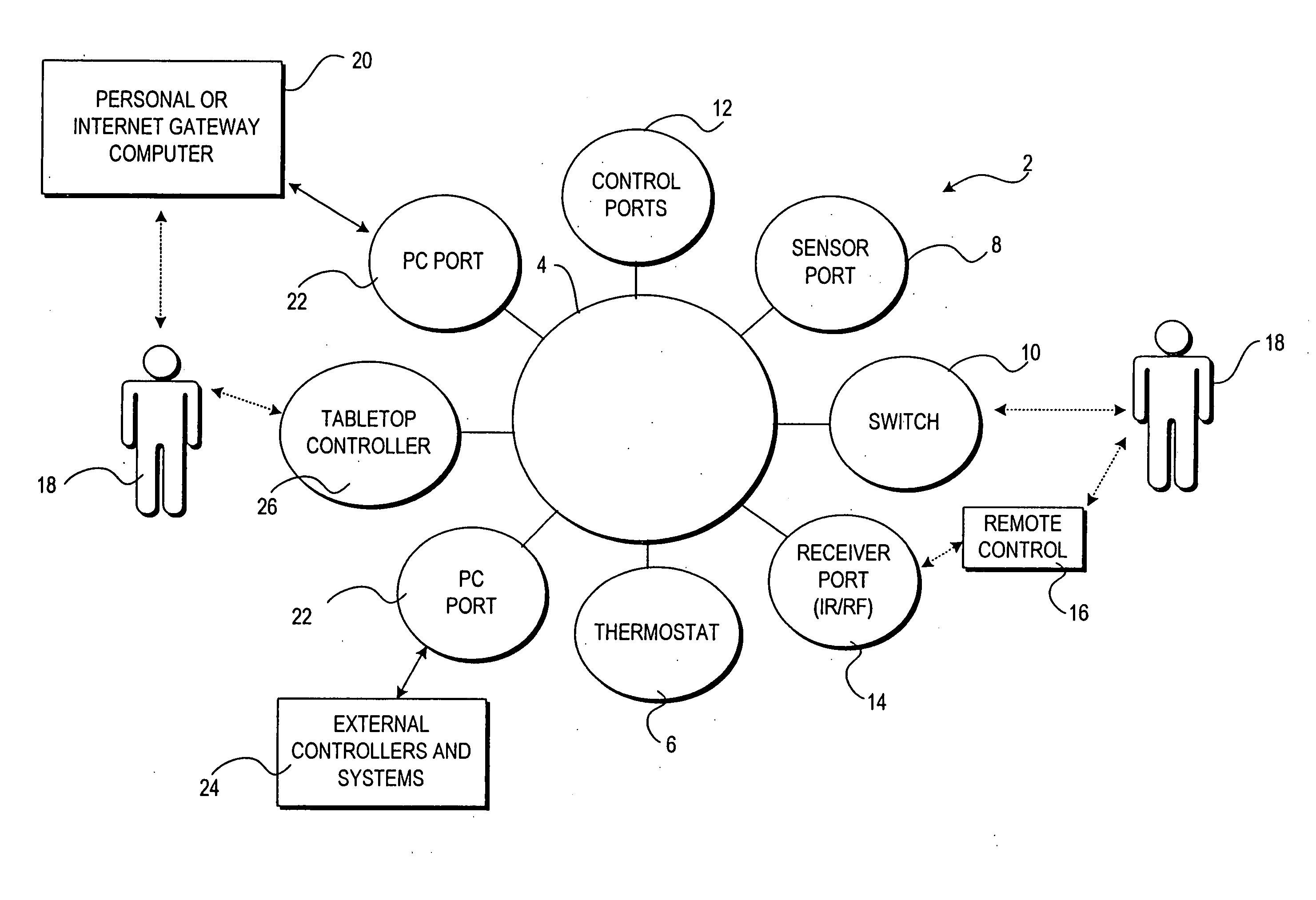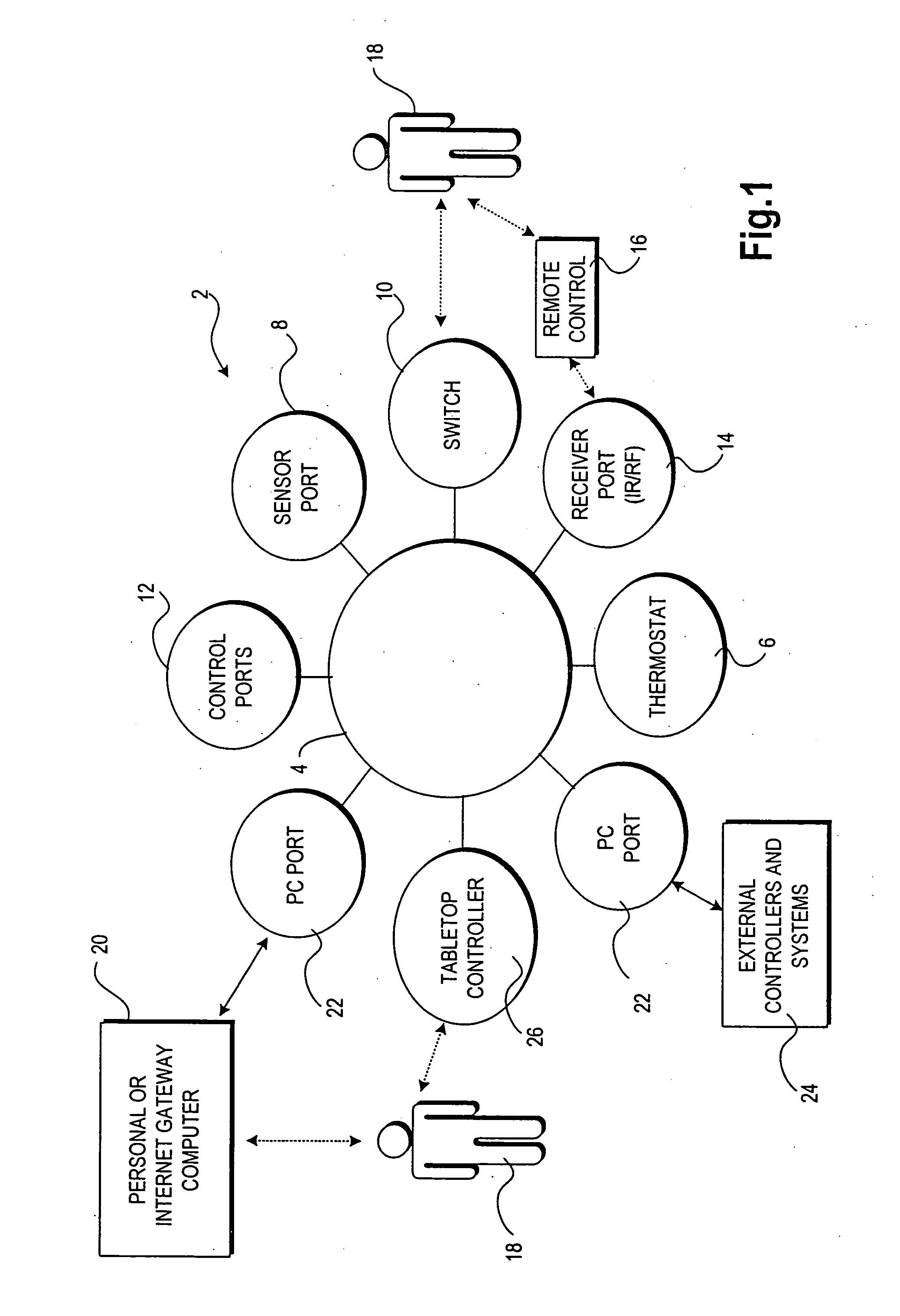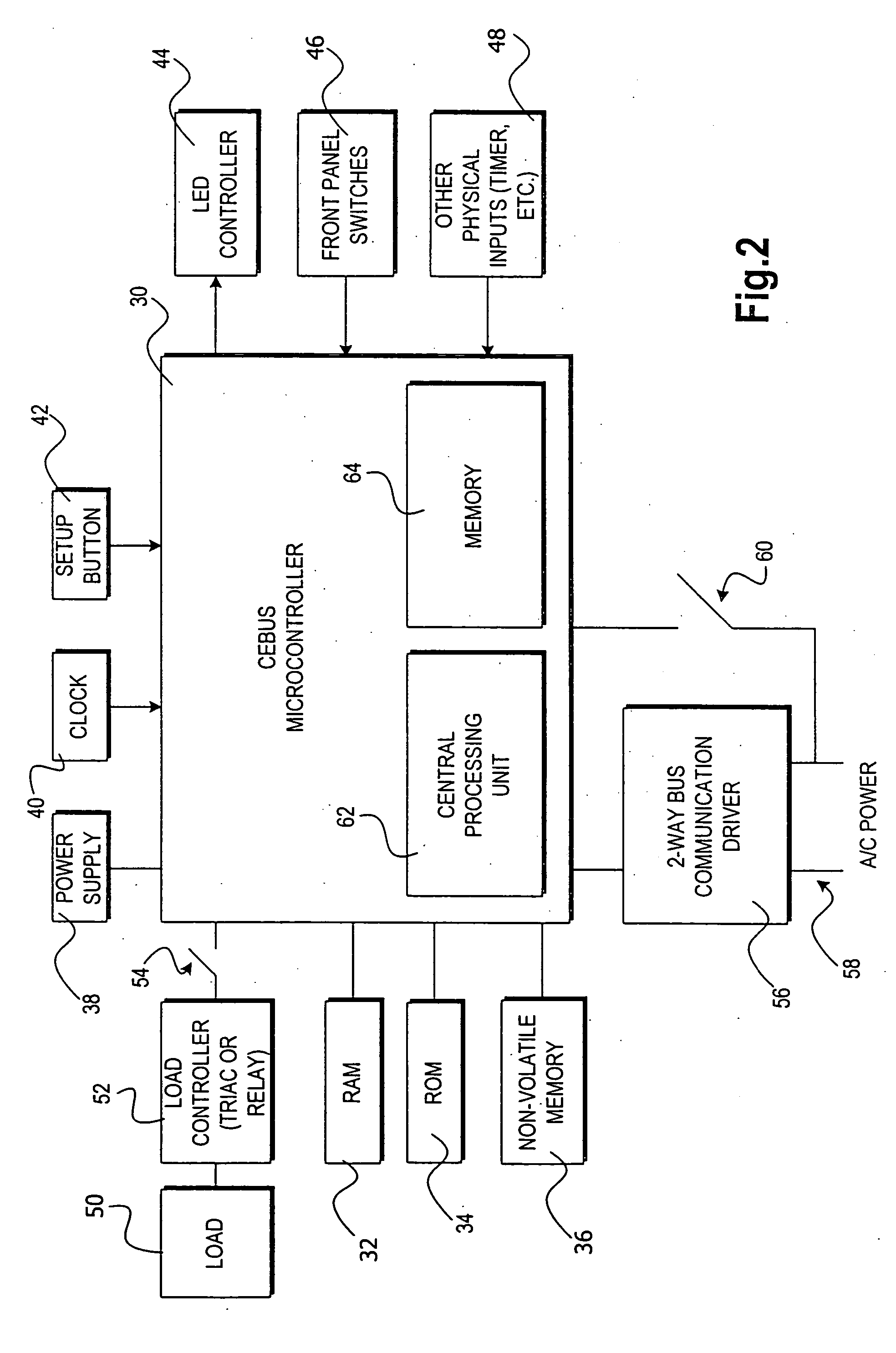Method and apparatus for providing distributed control of a home automation and control system
a control system and home automation technology, applied in the field of home automation and control systems, can solve the problems of limited approach, and inability to provide flexibility to the method, and achieve the effect of reducing network traffic and reducing delay
- Summary
- Abstract
- Description
- Claims
- Application Information
AI Technical Summary
Benefits of technology
Problems solved by technology
Method used
Image
Examples
Embodiment Construction
[0032] The present invention is directed to a method and apparatus for providing distributed scene programming and distributed control of a home automation and control system. According to an embodiment of the present invention, a device is provided for use in a home automation and control system that includes control logic for local storage of its house scene participation states. When multiple such devices are utilized throughout a home automation and control system, control of the system is distributed among the devices. Referring now to the figures, in which like numerals represent like elements, an actual embodiment of the present invention will be described. FIG. 1 provides an overview of an illustrative home automation and control system 2 in which aspects of the present invention may be practiced. It should be appreciated that the use of the term “home automation and control” includes, but is not limited to, home automation, home control, home networking, or connected home s...
PUM
 Login to View More
Login to View More Abstract
Description
Claims
Application Information
 Login to View More
Login to View More - R&D
- Intellectual Property
- Life Sciences
- Materials
- Tech Scout
- Unparalleled Data Quality
- Higher Quality Content
- 60% Fewer Hallucinations
Browse by: Latest US Patents, China's latest patents, Technical Efficacy Thesaurus, Application Domain, Technology Topic, Popular Technical Reports.
© 2025 PatSnap. All rights reserved.Legal|Privacy policy|Modern Slavery Act Transparency Statement|Sitemap|About US| Contact US: help@patsnap.com



